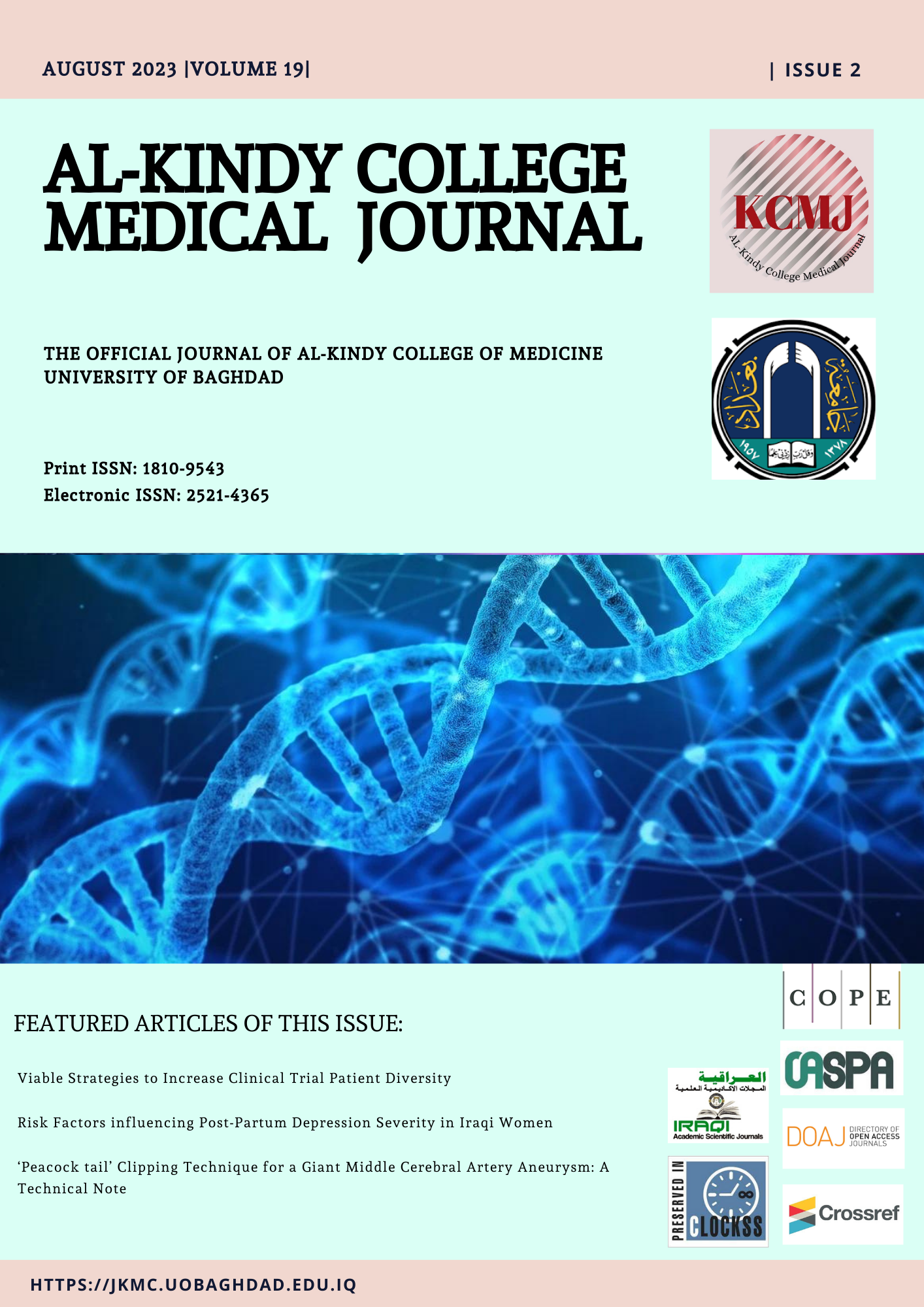The Effect of Duration of Stress Urinary Incontinence on developing Signs of Bladder Outlet Obstruction in Urodynamic Study
DOI:
https://doi.org/10.47723/kcmj.v19i2.842Keywords:
Urinary incontinence, Stress urinary incontinence, Mixed urinary incontinence, Urodynamics, Bladder outlet obstructionAbstract
Background: Stress urinary incontinence is a frequent urological disease in women; it has a great influence on an individual’s wellbeing and places a significant economic strain on any health service. The placement of urodynamic diagnostic tests in the evaluation route is an important clinical research concern in this field.
Objective: to find out whether the duration of stress urinary incontinence is associated with the finding of bladder outlet obstruction in urodynamic study or not.
Subjects and Methods: A descriptive study. With enrolled female patients had symptomatic Stress urinary incontinence as their primary complain. All the included patients were assessed thoroughly by history taking and physical examination and relevant clinical tests and investigation in addition to urodynamic evaluation consisted of multi-channel urodynamics measuring abdominal, vesical and detrusor pressures simultaneously.
Results: 140 females were suffering from stress incontinence. Urodynamic study showed maximum urine flow rate (Q max) mean of (20.45±9.86) ml/second, the maximum post void volume was 500ml with 36.89ml was the mean of post void residual volume, and 90.83cm water was the mean of urethral occlusion pressure. The mean of duration have positive relationship with age category but without statically significant. Ninety-eight patients have Q max flow more than 25ml/sec with mean duration 6.04 without any statically significant (p=0.872). 37 patients were having >0 ml post void volume with mean duration more than other patients that didn’t have post void volume but without statically significant (p=0.257). All patients with urethral pressure less than 120 cm had long duration mean than others but without statically significant (p=0.335). also, no statistical significance association between mean of duration and sphincter pelvic floor electromyogram (EMG).
Conclusion: there was no catechistically significant relationship between the urodynamic findings and the duration neither of stress urinary incontinence nor between the urodynamic findings and the age of the patients.
Downloads
Published
Issue
Section
License
Copyright (c) 2023 AL-Kindy College Medical Journal

This work is licensed under a Creative Commons Attribution 4.0 International License.














